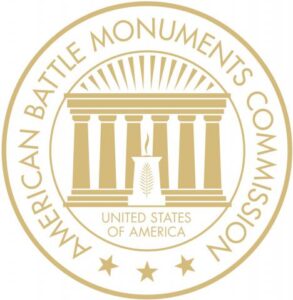On September 26, 1918 the Meuse-Argonne Offensive of World War I began, ranking as one of the most significant battles that has ever been fought by the United States. During this 47 day offensive, more than 1.2 million Americans took part, and more than 26,000 of these men lost their lives. To help teachers and students gain a deeper understanding of the fighting that occurred on the hills, fields, roads, towns and farms of the Western Front, the American Battle Monuments Commission (ABMC) is releasing Teaching and Mapping the Geography of the Meuse Argonne Offensive.
Divided into six main sections and targeted for middle and high school students, these classroom-ready resources are designed to help teachers and students see and analyze what our doughboys experienced, sacrificed, and achieved during the Great War. “To truly honor the fallen, we must ensure that future generations are able to retrace their steps in sacrifice, and if students cannot travel to this hallowed ground, we must bring it to them,” said Teresa Goodin, a 2014 Meuse-Argonne Transatlantic Teacher Scholar, who helped developed it.
These resources include deep background information on the offensive and its geographic location. This information then supports lesson plans that are driven by interactive technologies, such as layered web maps, 3-D videos and geo-tagged primary sources.
Developed by Goodin, and Chris Bunin, the 2016 National Council for Social Studies Outstanding Secondary Teacher of the Year, with support from Todd Ogle, Technology-enhanced Learning and Online Solutions, and Seth Peery (Enterprise GIS) from the Division of Information Technology at Virginia Tech, the lesson plans rely heavily on GIS mapping technology. This technology provides easy-to use, online maps that visually show details such as troop movement, historic images, strategic positions, and modern-day satellite views of the landscape. “By digitizing the battlefields and embedding pictures, primary sources, and videos into GIS maps we now have a 21st century resource that connects today’s students with the Meuse-Argonne in an authentic and meaningful way,” said Bunin. “The “hands-on” nature of these lessons will help raise awareness, understanding, and appreciation for the United States’ achievements and sacrifices during World War One.” These resources have been developed so teachers can use them in their entirety, or pull out pieces to reinforce a larger lesson that’s focused on World War I.
Resource Sections:
- Section 1: Overview of Teaching and Mapping the Geography of the Meuse Argonne Offensive
- Section 2: Introduction
- Section 3: Where? Why There?
- Section 4: Geography is War, A Case Study of the Argonne Forest and the Lost Battalion
- Section 5: A Virtual Field Trip: The ABMC monuments and Meuse-Argonne Cemetery
- Section 6: Lesson Plans, Interactive Maps and 3-D Imaging
Lesson Plans:
- It’s Now or Never! the Meuse-Argonne Offensive: In this activity students use ArcGIS online to interactively explore a layered map showing the phases of the American advancement during the Meuse Argonne Offensive. They will also look at a variety of embedded primary source photographs from the battlefield.
- Where? Why There? The Meuse-Argonne: In this activity students use ArcGIS online to explore the physical and human features of the Meuse Argonne battlefield. The goal is for students to gain an appreciation for the challenges the American Expeditionary Forces faced in the Meuse-Argonne.
- Geography is War: The Lost Battalion: In this activity students analyze primary source accounts from the Lost Battalion to understand its role in WWI, the impact of terrain and geography on those attempting to rescue them, and how the men overcame these difficulties and were able to hold their position.
- Honoring Service, Achievements, and Sacrifice: A WWI Virtual Field Trip: In this activity students take a virtual “field trip” to the Meuse-Argonne battlefield to explore the sites and images. During this “tour” students have the opportunity to see 3-D visualizations of WWI tunnels, trenches, bunkers, and ruins; follow a go-cam video showing where American dough boys once fought; and learn why ABMC monuments and cemeteries were established along the Western Front.
More than 14,000 Americans that gave their lives in the offensive are buried in the Meuse-Argonne American Cemetery.
In 2013 ABMC launched its formal education efforts with the goal of bringing World War I and World War II resources into the classroom. Bringing the Great War Home: Teaching with the Meuse-Argonne American Cemetery and Understanding Sacrifice: World War II in Northern Europe are the two programs released thus far. All of these resources have been developed by teachers, ensuring they are practical for the classroom.
ABOUT ABMC:
Established in 1923 by Congress, ABMC is a U.S. government agency charged with commemorating the service, achievements and sacrifice of the U.S. Armed forces where they have served overseas since 1917. ABMC administers our nation’s overseas commemorative cemeteries and federal memorials. For more information visit www.abmc.gov, or connect with us on Facebook, YouTube or Instagram.
 An official website of the United States government. Here's how you know.
An official website of the United States government. Here's how you know. 